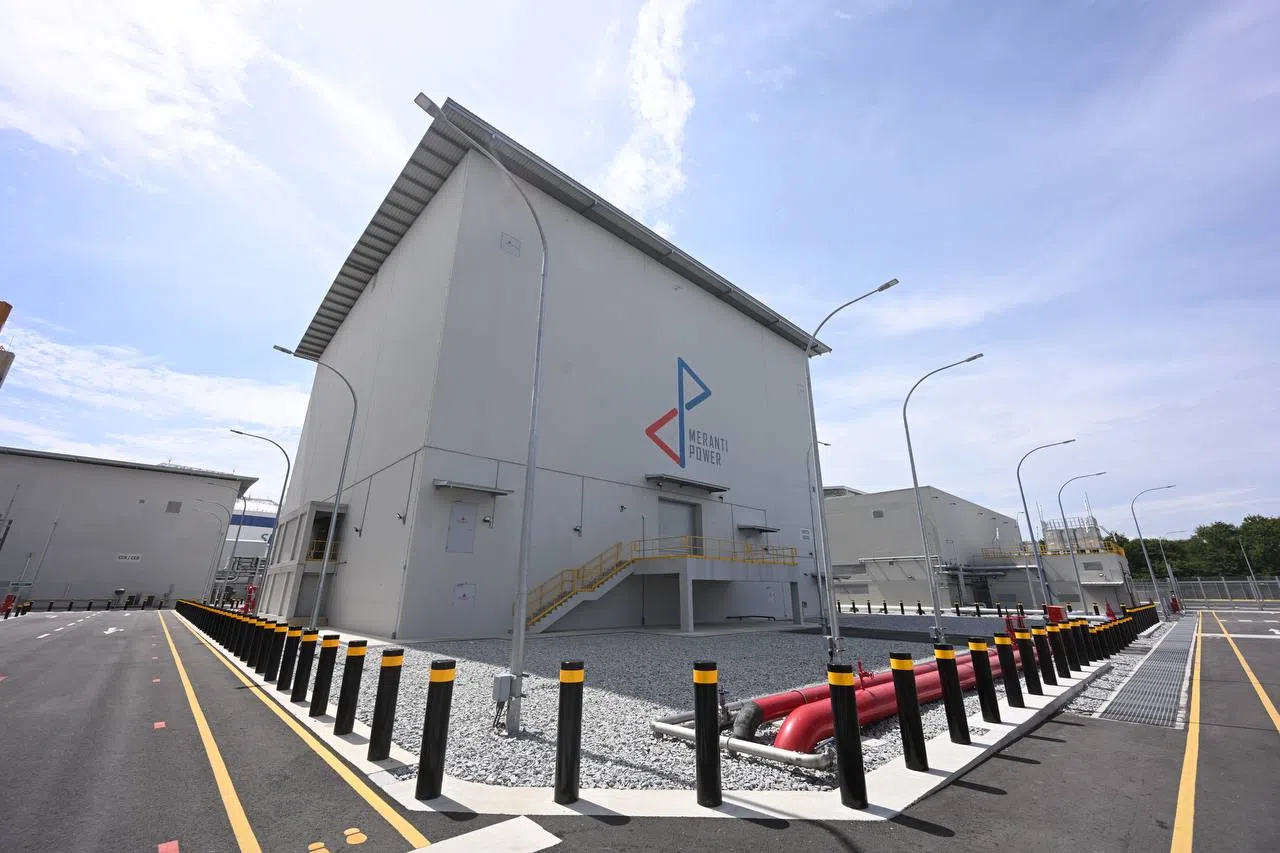Singapore launches hydrogen-ready back-up power plant on Jurong Island
Sign up now: Get ST's newsletters delivered to your inbox

When online, the facility is capable of supplying electricity within 10 minutes.
ST PHOTO: AZMI ATHNI
Follow topic:
- Singapore launched on Oct 29 a back-up power plant with the capacity to power one million four-room HDB flats.
- The fast-start facility mitigates power imbalances and supports renewable energy integration amid growing electricity demand.
- The back-up power supply will also meet operational challenges of integrating solar and wind power, as Singapore decarbonises its electricity grid.
AI generated
SINGAPORE – The Republic has officially launched a back-up power plant that can reach full generating capacity within minutes if there is a sudden shortfall in power supply.
The two open cycle gas turbine (OCGT) generation units, operated by the Energy Market Authority’s (EMA) subsidiary Meranti Power, have a total capacity of 682MW of electricity, which can power more than one million four-room HDB households.
When online, the Jurong Island facility is capable of supplying electricity within 10 minutes, which is critical if there is an unexpected increase in demand or interruption to other power sources, the company said in a statement.
The power plant’s opening on Oct 29 was officiated by Minister-in-charge of Energy and Science & Technology Tan See Leng, who also witnessed the project’s ground-breaking ceremony two years ago.
While the OCGT facility primarily runs on gas, it can also draw on up to 30 per cent hydrogen, when the low-carbon energy source becomes viable.
The facility will help ensure the power system remains secure and reliable amid Singapore’s growing electricity demand, said Dr Tan, who is also Manpower Minister.
Nearly all of Singapore’s electricity is currently generated by combined cycle gas turbines (CCGTs), which are the most efficient thermal generating units, he added.
However, he said CCGTs cannot start up quickly during contingency events, such as when other generating units run into technical issues and need to be urgently shut down.
“Therefore, many power systems around the world also have fast-start generation units to complement CCGTs and mitigate unexpected imbalances in the system,” he added.
CCGTs take up to 14 hours to start up from a cold state, whereas the Meranti Power facility can power up and reach full capacity in 25 minutes, said Dr Tan.
An EMA spokesperson said fast-start power plants like the Meranti Power facility can strengthen the resilience of the power system, and ensure a stable electricity supply, as Singapore integrates more variable energy sources like solar energy and electricity imports.
This comes as the city-state is working towards achieving net-zero planet-warming carbon emissions by 2050
The back-up power supply will meet operational challenges of integrating solar and wind power, both of which can be supplied intermittently due to changing weather conditions.
In a statement, Meranti Power said the efficiency of the new turbines, compared to older generations of the technology, will help cut Singapore’s carbon dioxide emissions by about 4,000 tonnes for every 50 hours of operation.
This is the equivalent of annual carbon emission absorption by some 200,000 Meranti trees, a versatile rainforest tree found in South-east Asia.
The facility, which was commissioned in June 2022 by EMA to replace ageing energy infrastructure, is also equipped with artificial intelligence to improve operational efficiency and real-time sensors that monitor the environment.
Dr Tan said the Government had stepped in “as a last resort” to set up the power plant as there was no commercial interest from the private sector, with OCGTs generally being less competitive than CCGTs in the market.
The facility was then designed and built in 28 months by a consortium
Still, the private sector in Singapore’s liberalised electricity market plays an important role in ensuring sufficient power generation capacity, said Dr Tan.
“The upcoming new H-Class CCGTs by Keppel, Sembcorp, YTL PowerSeraya and PacificLight Power will form a critical part of our baseload generation portfolio of the future,” he added.
H-Class gas turbines are advanced gas turbines with one of the industry’s highest outputs.
Dr Tan said Singapore’s first two advanced CCGTs deployed by Keppel and Sembcorp are expected to be operational by end-2026.


